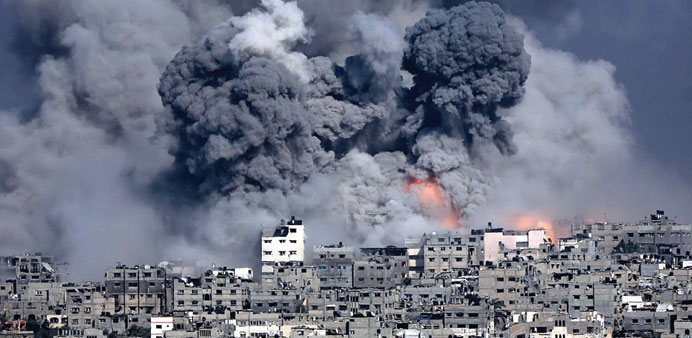By Shabtai Gold/Istanbul/DPA
I have lived in Gaza for almost all of my life. War is something not new to us. These, however, are the scariest moments we have ever lived.”
Mohamed Suliman lives in the Gaza Strip and these were the words he posted on Twitter as Israel intensified its bombardment of the coastal enclave on Tuesday morning.
“I look forward to surviving. If I don’t, remember that I wasn’t Hamas or a militant, nor was I used as a human shield. I was at home,” was an impassioned message Suliman sent out as the ground operation was getting under way, just over a week ago.
Suliman, in his mid 20’s, has more than 35,000 followers, which he built up over years of tweets from Gaza. His messages convey a mood of defiance, despite the military offensive.
He talks about the need to lift the blockade imposed on Gaza by Israel and Egypt, warning that his people are being stripped of their humanity by the conflict and economic hardship.
“I would rather die in dignity than agree to living in an open-air prison,” he writes.
Farah Baker is just 16. In one night of live tweeting on the Israeli air raids, she went from having just a few thousand followers to more than 30,000.
Her messages are a minute-to-minute diary of a teenage girl living the fear and bewilderment of an open-ended military offensive.
“This is in my area. I can’t stop crying. I might die tonight,” she said in one post, at about 1am, accompanied by a photo of Israeli flares illuminating the night sky. A previous tweet described “the worst night in this war”.
She posts brief video clips of flares lighting up the night sky, sound clips of explosions in her vicinity and recordings of the incessant buzz of drones above her.
In some of the pictures, it appears as if it is midday, rather than midnight, because of the light coming from the Israeli military activity.
“This is one of the hundreds bombs that I’m hearing. Gaza. YOU MUST LISTEN,” Baker said and posted the sounds from outside her window, the boom and pops of war, ever so close.
Like any teenager, she has a generous use of hashtags, capital letters and abbreviations.
“Whenever my 6 yrs old sis hear the rocket falling she covers her ears and shouts while crying in order not to hear the bomb. #Gaza,” she says.
Almost all her tweets are in English.
During Israel’s last offensive in the Gaza Strip, Operation Cast Lead in 2008-9, social media was only beginning to become a way for Gazans to connect with the outside world.
These days, they use numerous platforms, like Facebook and Twitter, to get their message out, circumventing traditional media and attracting audiences who want to hear first-hand accounts.
Some pundits have speculated that Israel, once renowned for a slick public relations operation during times of crisis, is facing a challenge from young people on the ground, and their supporters around the world.
The hashtag #Gazaunderfire gets about 300,000 mentions a day, compared to about 10,000 for #Israelunderfire. It’s no scientific measure of support for either side, but does reflect the level of mobilisation on social media, which is becoming increasingly important.
“Israel has lost the war of international public opinion,” wrote Paul Bell of Albany Associates, an international consultancy that works on communications in conflict areas, said of the hard-hitting images coming from Gaza.

Smoke rising from Tuffah neighbourhood after Israeli air strikes in the east of Gaza City yesterday.


